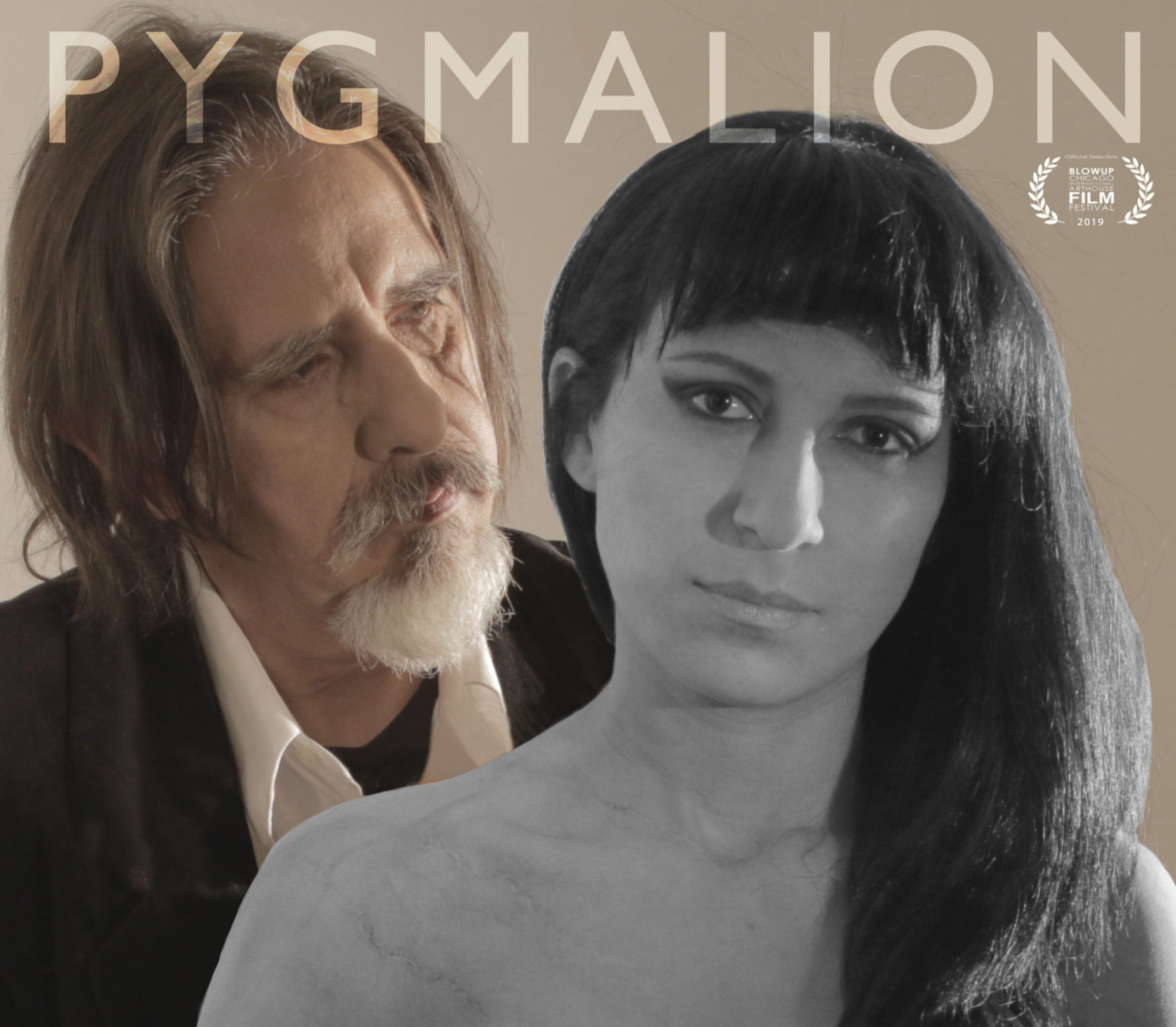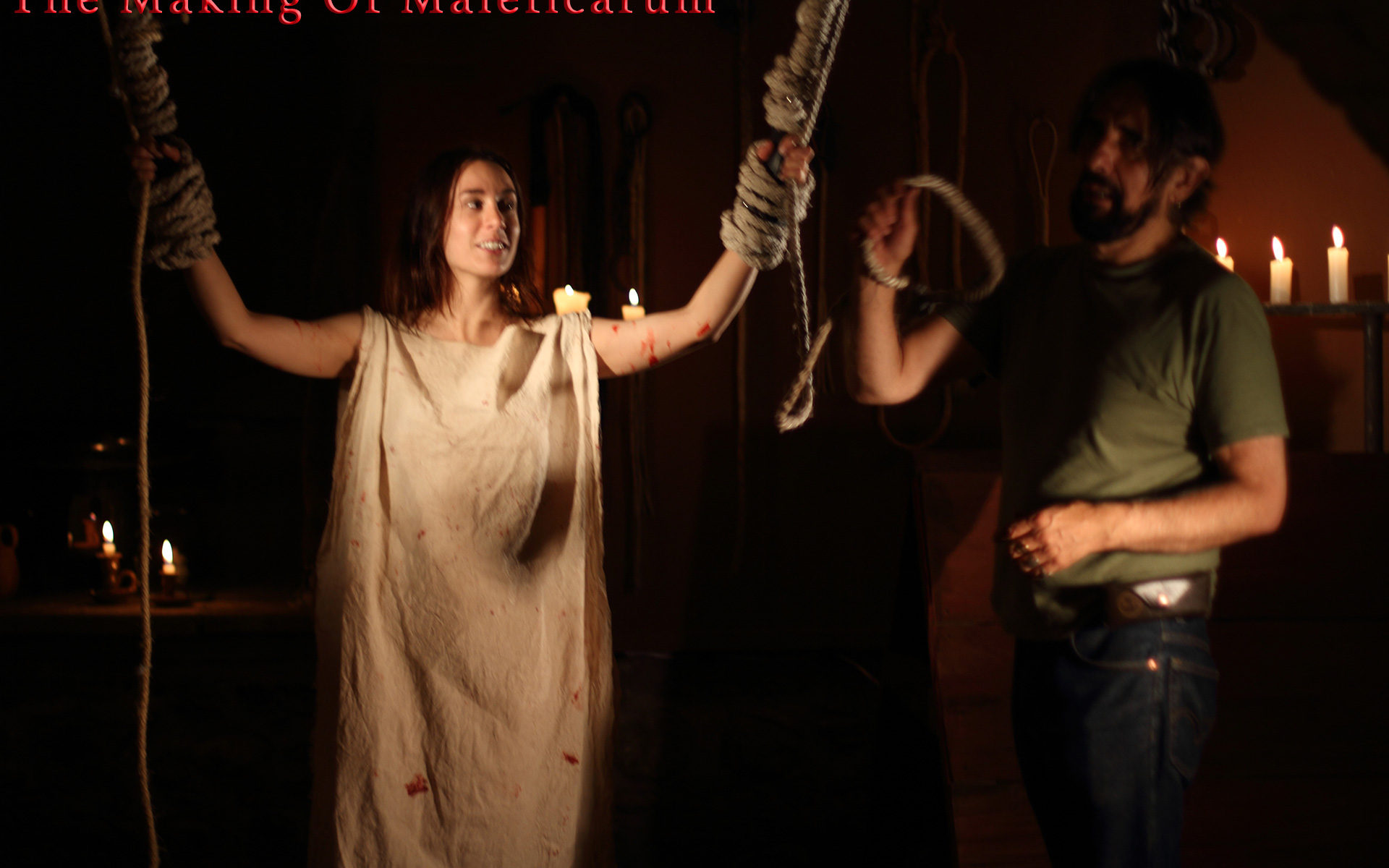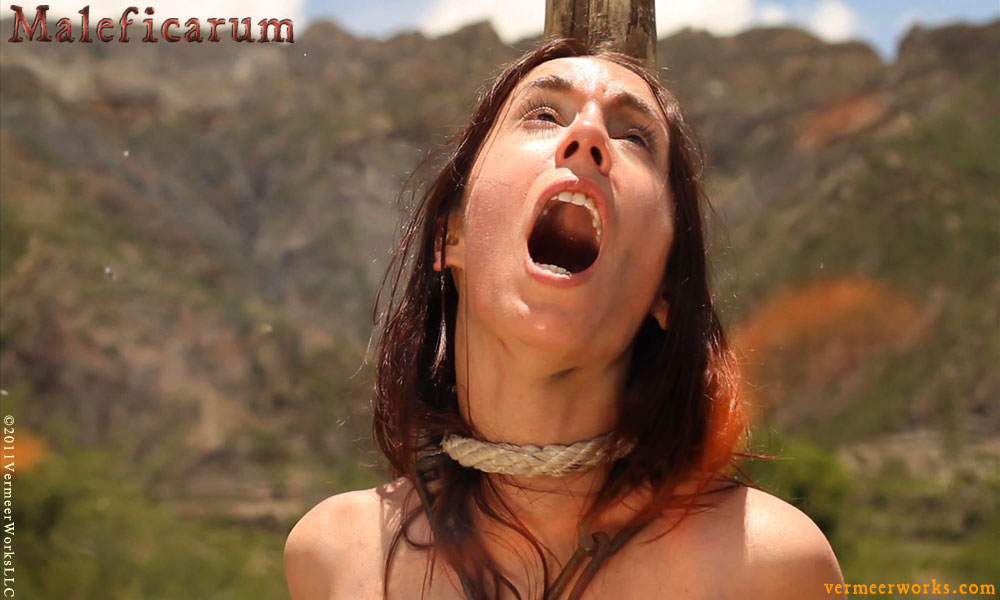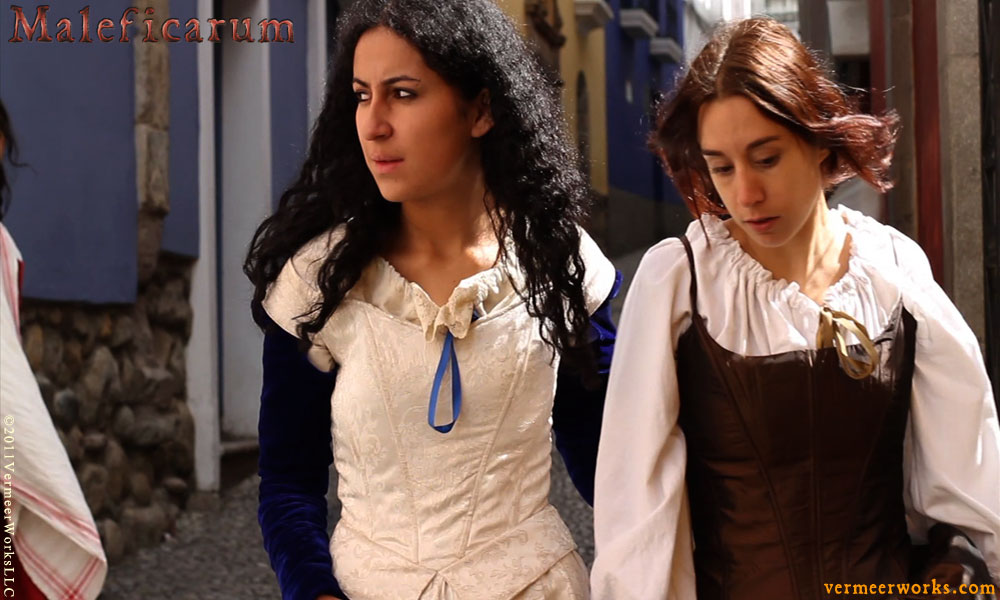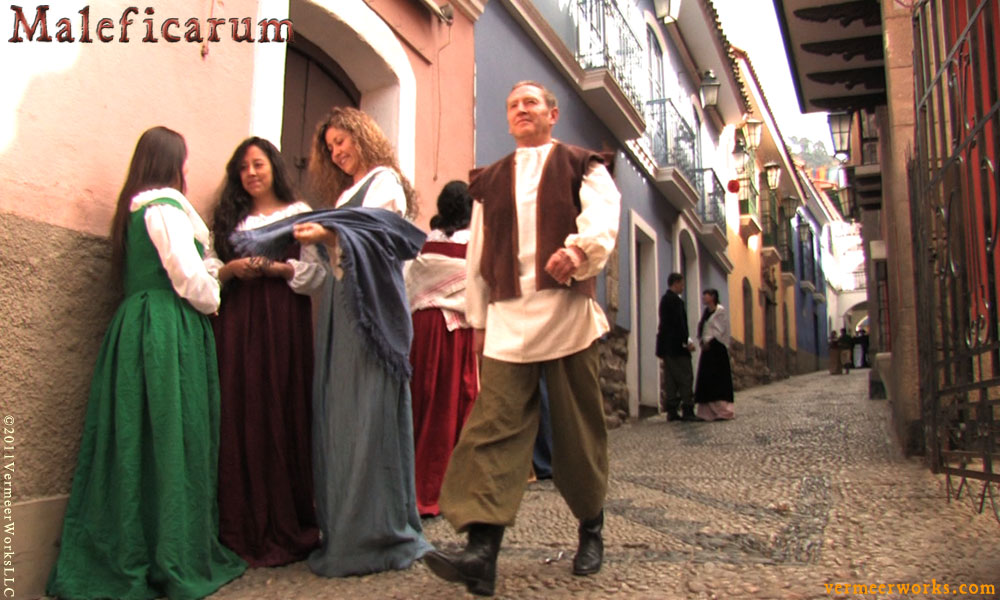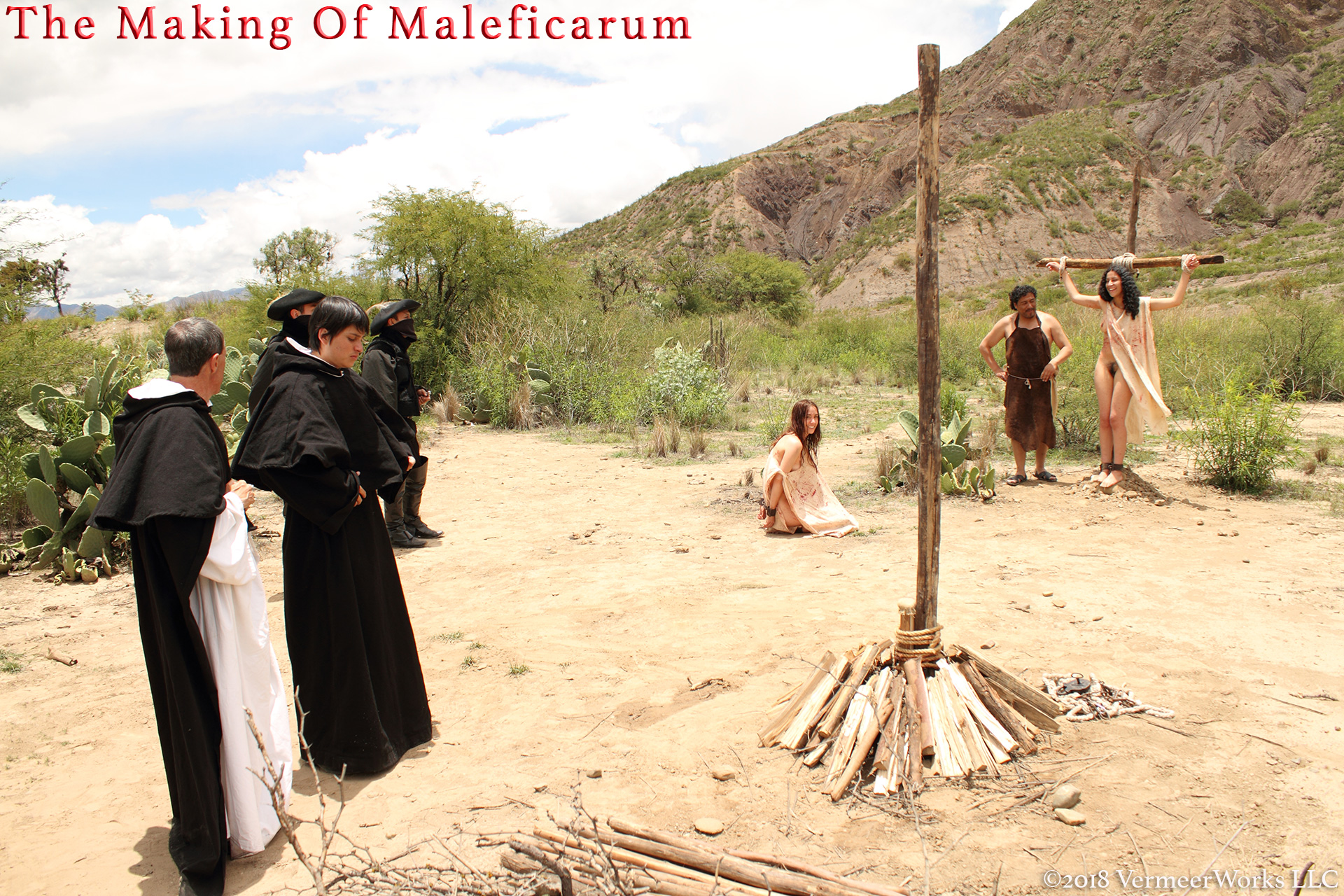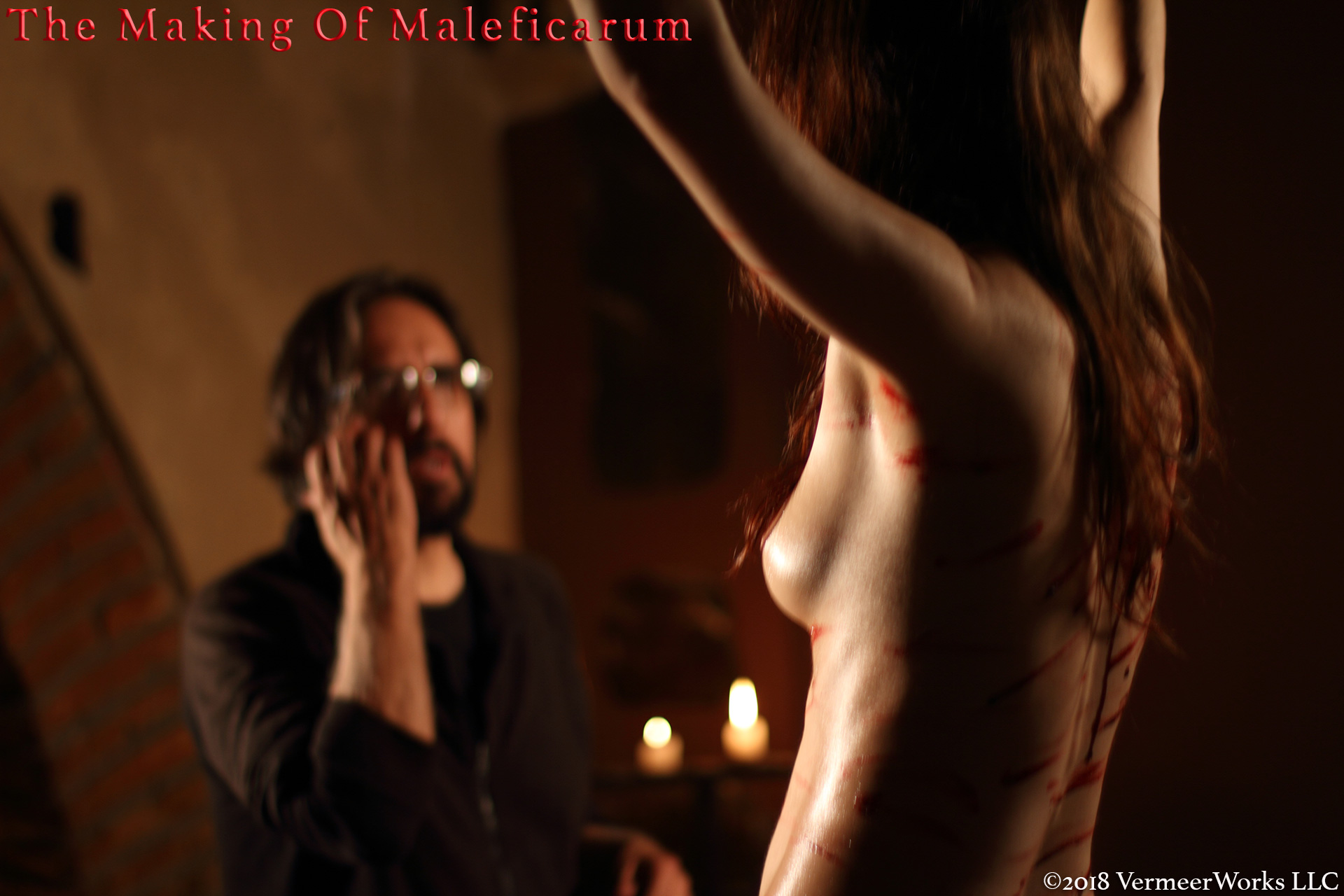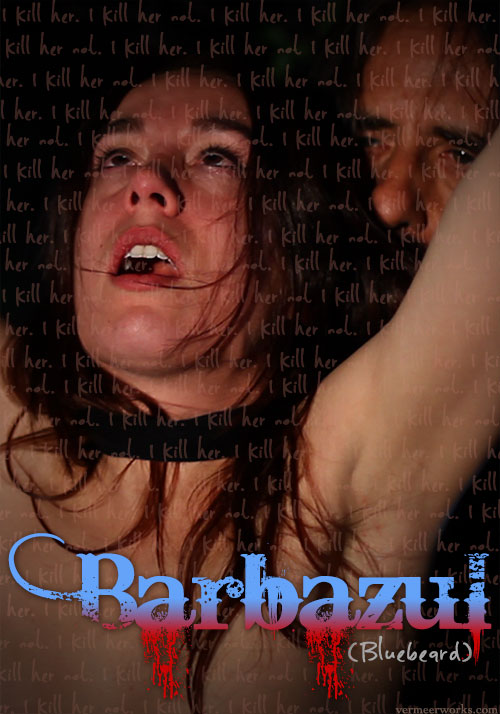by Mike Haberfelner
(re)Search My Trash November 2011
First of all, could you bring us up to speed: Your new film Maleficarum, what is it about?
Jac: It’s the story of two young and beautiful women who fall in the hands of the Holy Office, better known as The Spanish Inquisition. It’s set in an Andean city, unnamed, but it was part of the Holy Office of Lima which covered most of South America.
One of the women, Francisca, is a young heir to lands and fortune, she’s Catholic. The other woman, Mariana, is Anglo Saxon and Lutheran both of which were not seen nicely in those times and in those parts of the world.

Amy, how do you approach a role as self-sacrificing as that of Mariana in Maleficarum?
Amy: It was a difficult role for me. I’m a method actor, so I really get into the role, I become the character. It’s difficult to play a character who’s very different from you, especially one that is completely outside of the context of modern times. I’m a contemporary woman, with a different worldview than Mariana, so I can’t reference anything by asking myself, “What would I do in this situation?”. It’s about what Mariana would do. It took some imagination and research to create her.
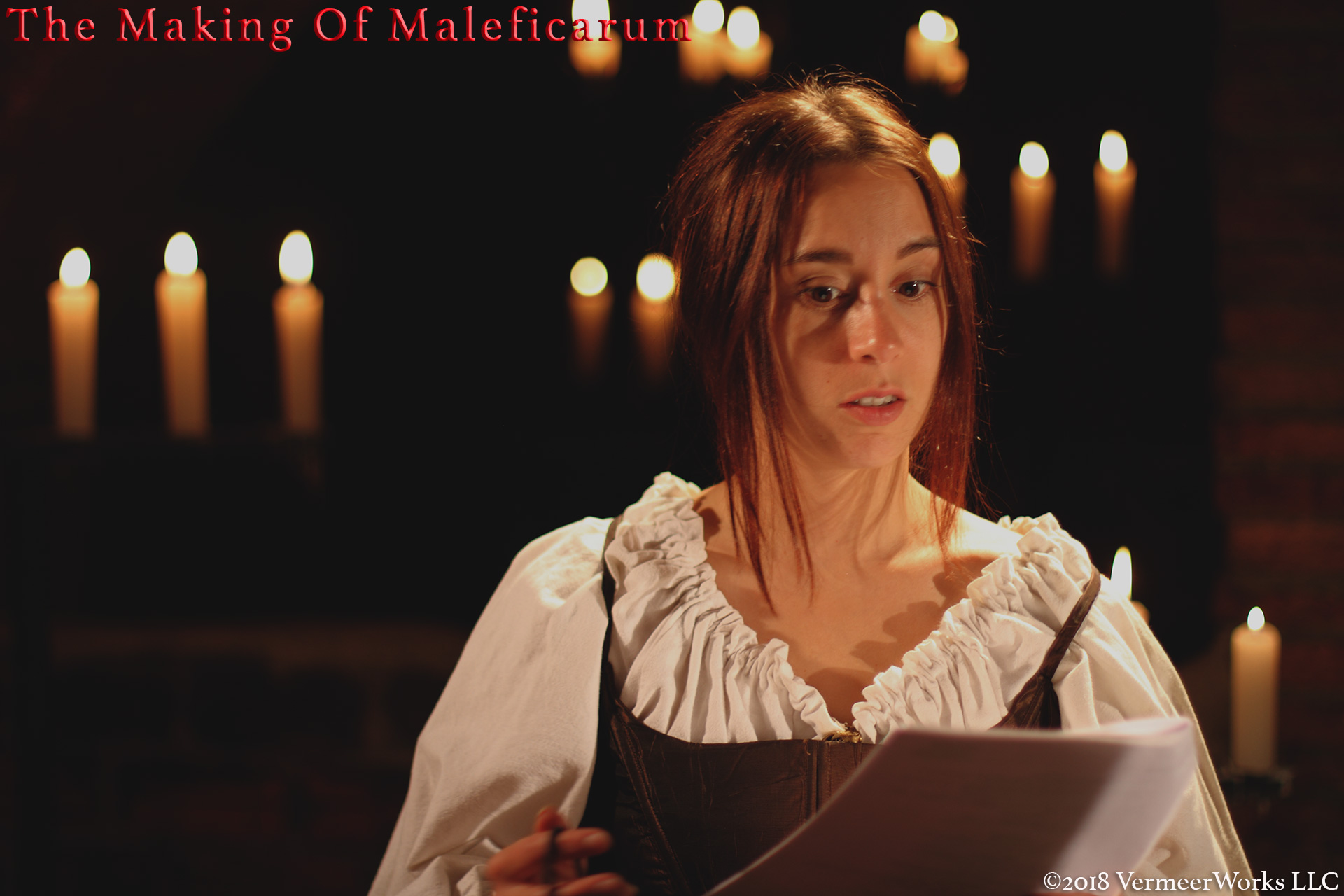
Amy Hesketh |
Mariana is someone who is in the wrong place at the wrong time. She’s a Protestant widow, with no family, and thus unprotected by a man, not exactly a good thing in that time. She is taken in by a rich orphan woman and they begin a lesbian relationship, and she’s subsequently persecuted by the inquisition. She’s someone who should logically just give up, but she keeps on hanging on, in spite of being brutally tortured, and seeing her lover tortured; she has a strong soul.
I had a few tough times after shooting some of the more pathetic moments in Mariana’s arch. It was hard to shake off so much suffering and misery, and I felt like crying even more after we had cut, out of sympathy for the victims. I think it starts to affect my happy chemicals or whatever after a full day of that.
Jac, Maleficarum is as intense in content as it is in style. What did you do to make the cast (and I especially mean your two leading ladies) feel comfortable during the shoot?
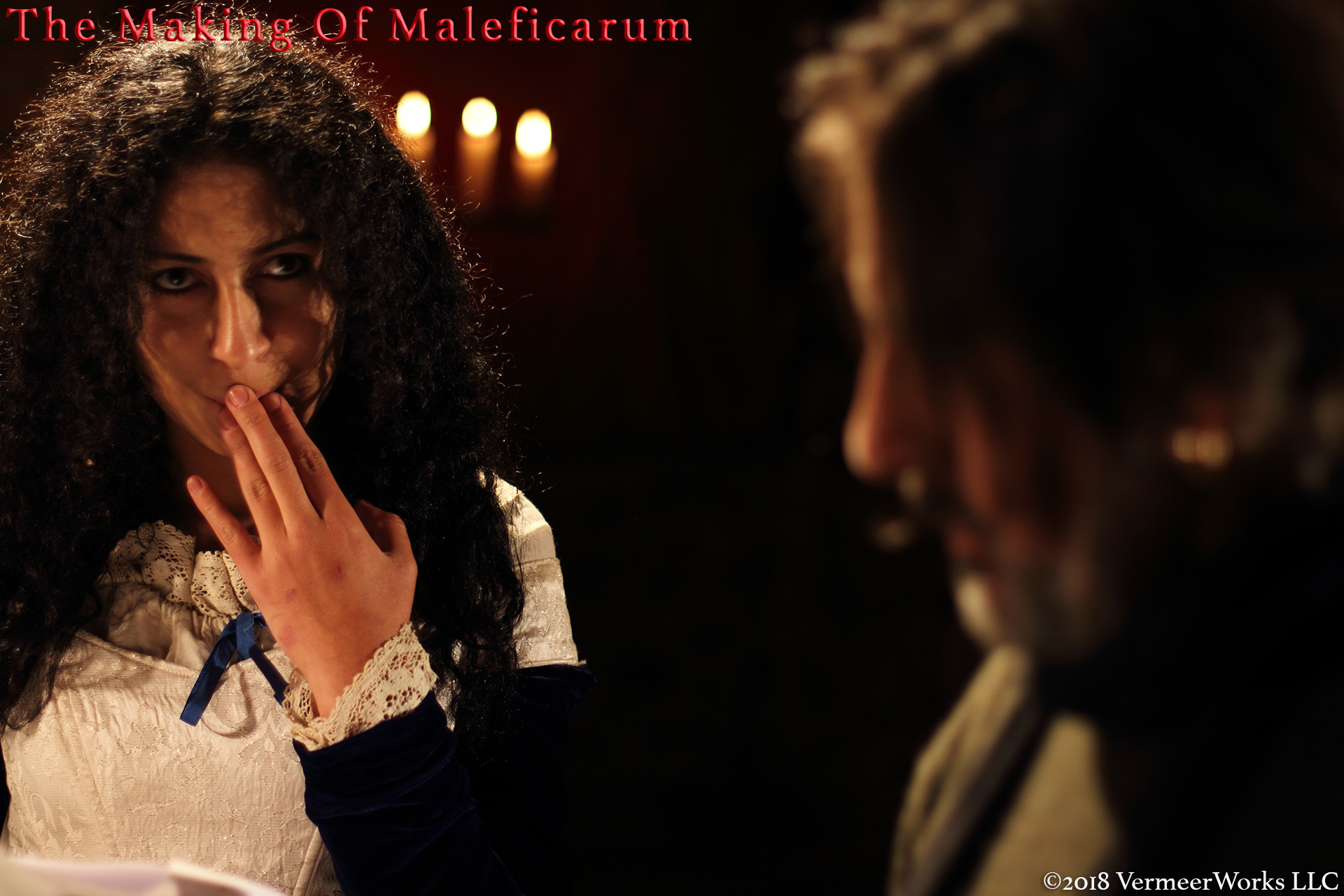
Mila Joya |
Jac: In the case of Amy there was never any question as to how far she was willing to go, in fact a lot of the situations she’s in, she had a big input in designing them. For Mila, in the other hand, this is the first film she ever made, in fact it’s the very beginning of her acting career. We had some “training” sessions a few weeks before the shooting of the movie. During that time we talked a lot about what was going to happen, we rehearsed some of the hard scenes.
One issue that came up early in those rehearsals was that of nudity. She mentioned that no one ever saw her naked, not even her sister. So we had to work on that until she was comfortable.
There’s the element of trust and I first had to win hers.
When we were shooting I first shot a few scenes with Amy while Mila was working as my assistant, she works behind the camera as well. I think seeing Amy feeling comfortable in the set, working with the other actors, made her feel more comfortable about doing it.
Once we started she was very, very comfortable in her role and the situations. In fact, we shot three movies almost at the same time and in all three of them she had hard scenes and she did them well.
Maleficarum contains quite a few quite violent torture scenes that simply can’t have been all special effects (and I may stand corrected here), that must have hurt for real, like the long whipping sequences and the burning on a stake. How do you handle such scenes as a director, and as an actress/victim
|
|
Jac: It’s not the first time I do scenes like that as a director. Martyr being another film where the demands on the actors were very high, however it’s always a delicate issue. My first concern is the safety of all involved and in the case of Maleficarum, Amy was going to be the one at more risk, so we worked out the details of each scene to make them in the best possible way and under the safest of conditions.
There are always risks, of course, as with anything. Working with strong lights and all those electric wires all over the place already poses risks.
But we were very careful, which doesn’t mean that the leading ladies did not suffer some. However they had the last word always.
Scenes like the burning at the stake were planned and worked out in ways that I’m not going to reveal, but Amy was never in any danger of being consumed by the flames. Now, the Spanish Horse, that’s another matter… I don’t know which was worse for Amy, the Spanish Horse or the roasting over hot coals.
One thing that always makes me nervous in these cases is not being sure when the acting stops and reality begins. I see Amy going through the scene and her acting is all too real, so it’s hard to know.
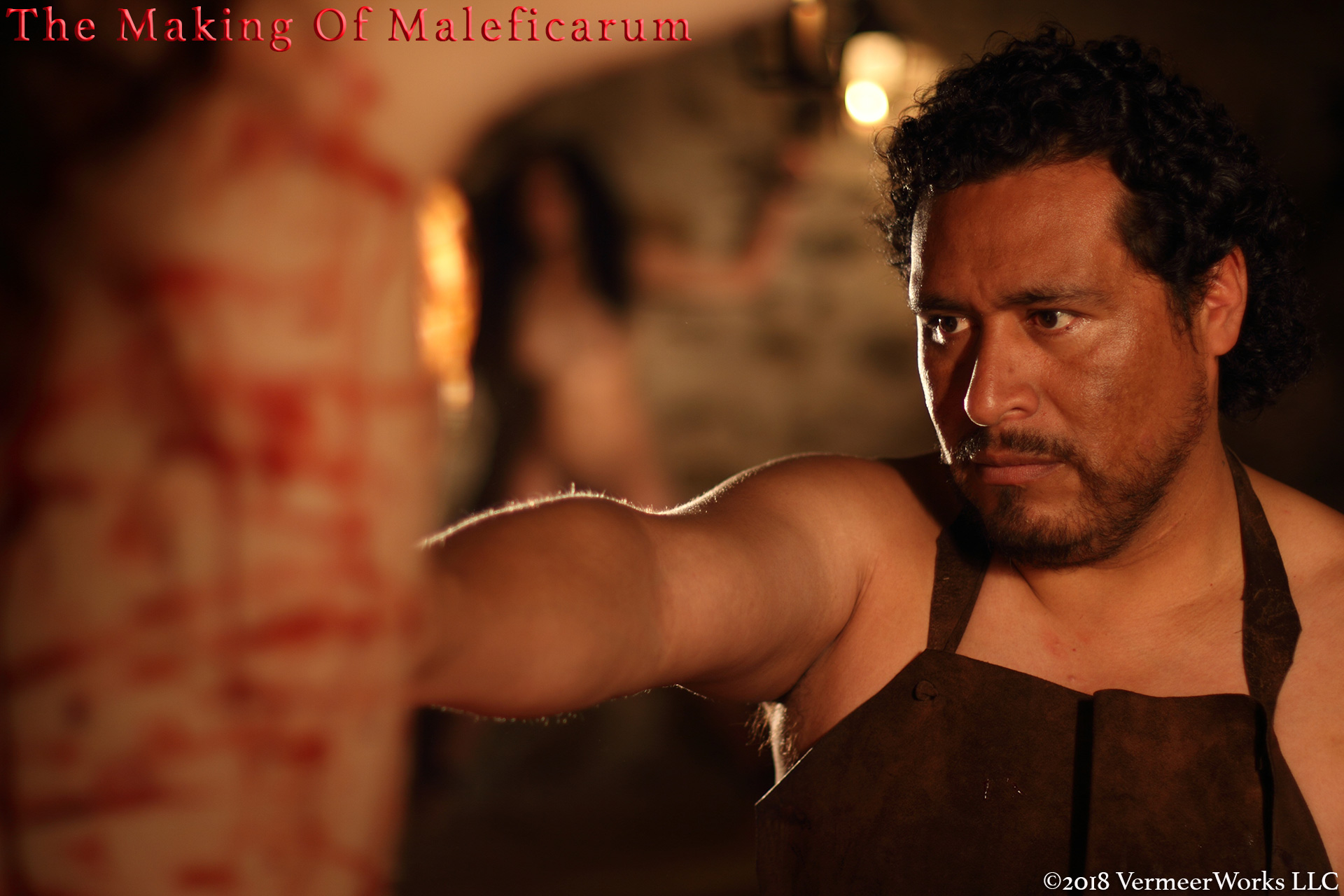 |
Amy: I’m a great believer in portraying realism in a movie, and thus I have to suffer some for my art. But I’ll never suffer to the point where I would not recover. There’s a line there between discomfort and pain. We use special effects, lots of them. It’s a movie, after all.
Anyone who does these kinds of scenes has to be very observant; the actor has to know when to say “Cut” if necessary, before the director does. We also spend a huge amount of time thinking about the physics of a scene, how it works mechanically. And we always take into consideration that what one actor can handle, another cannot. I’m small and an active person, so I can physically do things that my co-star Mila cannot and should not even try.
I’ll never try something that would harm me permanently. I’d like to make other films in the future.
All torture aside, Maleficarum can also be viewed as the ultimate love story. Would you at all like to comment on that interpretation of your film?
 |
The love story in the film is central to the whole drama. It is because of their love for each other that they get into trouble and it is that love that gets them through the story to the very nasty consequences and beyond. Is it the ultimate love story? I’d love to think that it is.
The women are from two different worlds, Francisca is of Spanish descent, Catholic and very, very wealthy… and she’s the only heir to her parent’s fortune and lands after they die. Mariana, in the other hand, is Anglo Saxon, Lutheran and penniless; her husband, an apothecary, died leaving her in the street.
|
|
These women live in a small town where everybody knows everybody. There’s a saying in these parts, “pueblo chico, infierno grande”… Small town, big hell.
So, Mariana is on everyone’s lips, minds. The gossip in town centers around the two young women and that gossip is not kind, far from it.
So they are the targets for the town’s superstitions, hatred, ignorance, intolerance.
But their love is bigger than all of that and their suffering only strengthens that love. So, it is a very romantic story.
Amy, is it true that you have among many other things you also built the torture devices used in Maleficarum, like the rack and the Spanish Horse? You just have to talk about that for a bit!
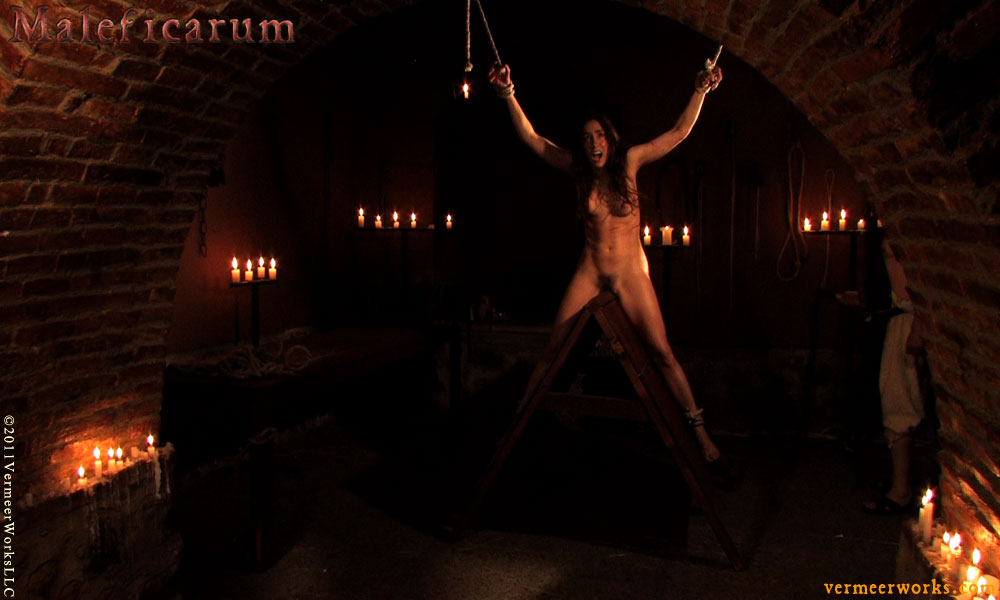 |
Amy: Yes, I designed all of the metal devices and built all of the wooden torture devices in the movie. I like working with my hands, I’m pretty good at carpentry, having been something of a tomboy. My father thought I should be a completely self-sufficient, modern woman.
The torture devices, such as the Spanish Horse, I thought long and hard about. I wanted them to look realistic, but I didn’t want myself, or Mila, to be injured by something that was too real. But there’s a point when you have to decide to make it realistic, or not include it in the film at all.
Maleficarum is a film about the inquisition in 17th century Peru. What convinced you you could pull off a period piece like that on a relatively moderate budget?
|
|
Two things. First one big contributor who put some seed money in the project, mainly so we could build some of the contraptions we’re using in the movie, like the apparatus we use in the roasting scene, and second the fact that Amy said to me that she could make the costumes. She actually revealed a secret to me, one she held deep inside because she was afraid I would exploit that talent. The secret is out, so she can expect a lot of exploitation of it in the future. It was very important for the story to have those two elements, the costumes and the torture instruments, everything else was easy to get.
There’s a kind of a gigantic flea market here, up in El Alto, a city above the city where we live. You can find anything there. Amy loves to go there to get mainly fabrics of all kinds. So she used many of the fabrics that we had been storing for some time to make the costumes.
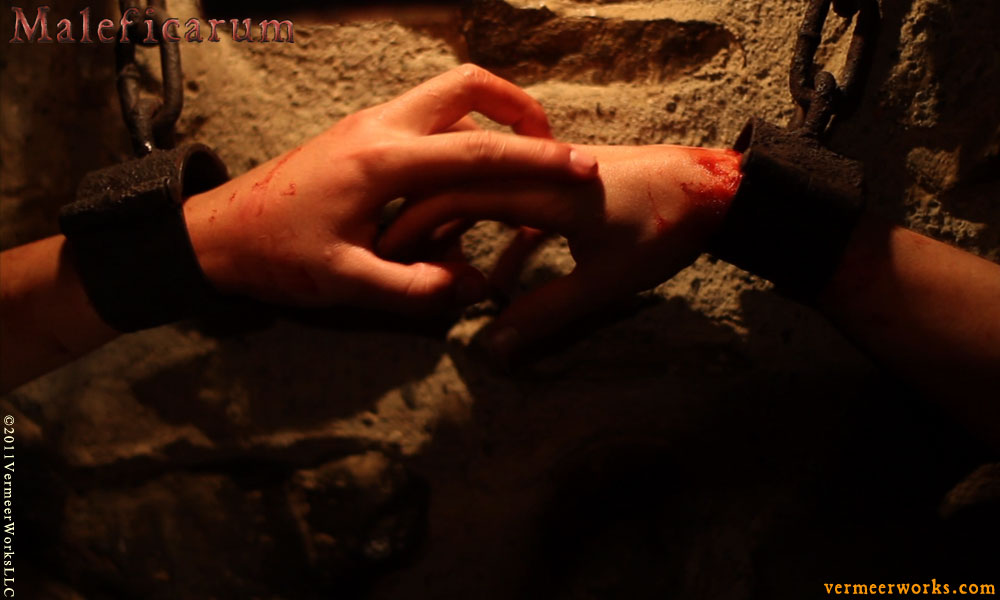 |
There are lots of iron-workers, who make fences and things like that, we found one with artistic inclinations who made the wonderfully looking shackles and the roasting contraption. Amy built the Spanish Horse and the Rack; she’s very handy with tools.
Those things were basic for the making of Maleficarum, everything else fell into place as if by magic … or should I say witchcraft.
Maleficarum sounds like a controversial films for various reasons almost by definition. What can you tell us about audience reactions so far?
Jac: Yes, I was very aware that it would be a very controversial movie and I still think that when we screen it here at the Cinemateca, if they accept it, it will cause many a critic to tear his/her garments in despair and anger … and I was willing to take the risk.
|
|
And I have to say that so far those who’ve seen the film love it. One thing about the new times we live in is that we, the filmmakers, no longer depend on third parties like distributors or exhibitors or programmers… we have a direct connection to our audience mainly because of the internet. So we get word directly from the viewer and their comments range from WOW to WOW Awesome, to This IS THE Best I’ve seen and so on.
There was some early promotion of the film through forums and social networks and that’s where our audiences were and are. The reaction is fantastic. In three days we made in sales what we normally make in two months for one title.
To put this in perspective, when we released Martyr, in the fist few hours after its release in the internet we made more than what we made during two weeks at the Cinemateca here, in La Paz. Well, Maleficarum made in three days what Martyr made in total so far.
So, the audience reaction is great. In addition, Maleficarum is stimulating sales for Martyr, which is great.
Maleficarum ends on an unexpectedly happy note. Why is that, and what do you think about the way the actual Catholic church as such handled/handles one of its darkest periods, the age of the inquisition?
Jac: There’s a twist at the end that may or may not seem happy, depending on whose point of view it is. But since I based this story on the archives of the Holy Office of Lima, which covered practically all of south America below Ecuador, I took some facts, like the testimonies, and some of the characters, like Mariana de Castro who was condemned to be burned at the stake, and there’s some obscure item of whether she actually died there.
The Catholic Church is a 2000 year old institution with a long, rich, crazy history full of positive and negative moments. It influenced the development of Western Civilization. The times of the Inquisition were times of widely spread intolerance, religious wars, and so on and the Church had a big hold on earthly powers. I think the inquisition is mostly a human issue. Intolerance and hatred, superstition, etc, are all human traits and the Church is made of human beings.
If I’m not mistaken Pope Paul John II apologized for the inquisition. Which I think is a good thing, to acknowledge the sins of the church through history. And they are many.
|
Jac Avila directing Amy Hesketh |
Amy, a few words about Jac Avila, the director, and Jac, a few words about Amy Hesketh, the actress, and what can you two tell us about your role reversal in Amy’s movies?
Amy: I have a lot of respect for Jac as a director and actor, and he reciprocates that respect for me. He knows that I’m going to give 100% in a role, so he lets me do that and doesn’t try to direct me too much. We talk a lot about the character before we start shooting the movie.
In letting me do my thing, Jac opens up the stage for moments that would not otherwise happen, because they’re not in the script and only come out when an actor is given the freedom to become a character.
My best “moment” in the film is when I drag myself over to Francisca and nudge her leg with the top of my head. When I see that it moves me. Not to sound conceited or anything.
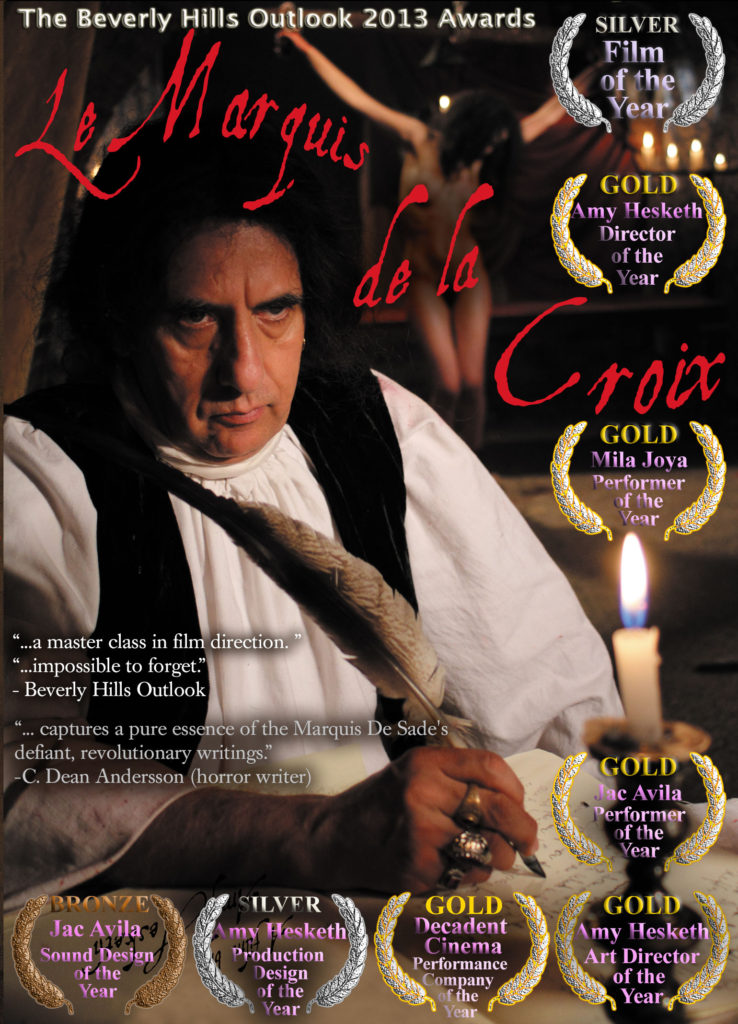 |
As an actor, Jac is a bit difficult to work with, he can be something of a prima donna. And he doesn’t really like being directed, he has his own idea of what the character should be (his internal director coming out) and I of course, have mine. So I have to be very firm and stand my ground and fight him on nearly everything.
But, the end result is really fantastic, because I know Jac really well, and I know what I can wring out of him. It’s all about skillful *cough* manipulation.
Jac: Amy is an amazing actress, but she’s also a very good director and I do have to say that her skills as a producer are impressive. As an actress she delivers a lot more than what’s expected from a role. There’s one scene, after Mariana is raped and she drags herself to where her lover, Francisca, is tied up, unconscious. When she reaches her lover, Mariana is on her knees, crying, looking up. That scene is the hardest for me to see. Amy plays the character with such deep sadness and despair that breaks my heart every time I see it, and I had to see it a lot, I was editing the movie… so, for her to get through to me in such a way is proof that she’s an amazing actress.
As a director she knows what she wants so as hard as it is for me to submit myself to someone else’s wishes… I do it, reluctantly at first, and willingly at last… I have to say that to work simply as an actor with her is relaxing to me. I just sit back, relax and let the character take over and let the other ones suffer.
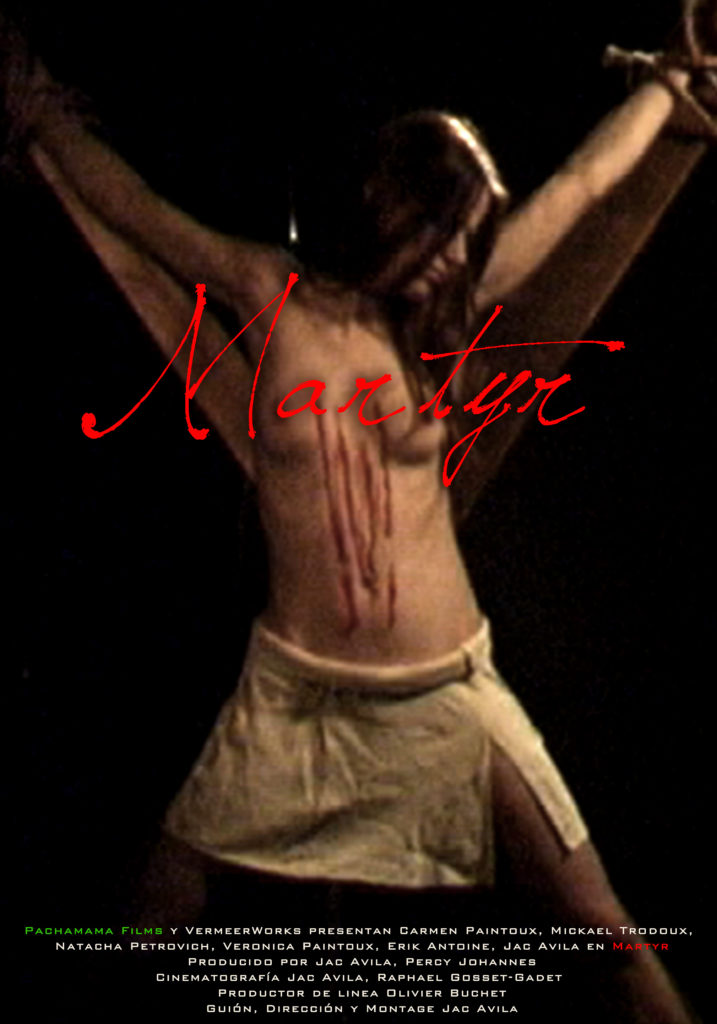 |
Amy, in our last interview [click here], Jac told me that you wanted to work with him after seeing his film Martyr, a film about a 21st century woman reliving the torments of a 3rd century martyr. Would you like to elaborate on that?
Amy: I saw Martyr in a festival in Oruro, Bolivia, I was traveling around South America at the time. What I saw was a movie that was beautiful, like a painting, very well acted, and with a controversial subject matter. Essentially, what I wanted to be doing.
And after hearing Jac talk in a lecture/Q&A about digital film in the same festival, I discovered that he had made Martyr with a low budget and a lot of talent from the cast and crew. I thought to myself, I have to convince this guy to take me on and support my projects. So I did that. It didn’t take a lot of convincing.
Sirwiñakuy was in the works two years after that, then Barbazul, then Le Marquis de la Croix. And now I’m planning my fourth film for 2012.
In the films directed by both of you, I see strong sadomasochistic undercurrents. Would you like to comment on that?
Jac: I’m drawn to the subject, of course, in all its forms, I think it’s what interests me the most. If I was gay I would be making movies with a gay element in them… I guess it’s because of my own sadomasochistic tendencies and I’m not afraid of admitting that, in fact I think I’m flaunting it. I don’t know if one is born that way or culture influences and shapes what is attractive to us.
I grew up Catholic with the images of martyrs all around me and the virtues of suffering in the highest level of goodness, I guess that had something to do with how I turned out, but there are a lot of people who have the exact same background and yet, don’t have the same tastes as I do. So, I believe it had to be IN me.
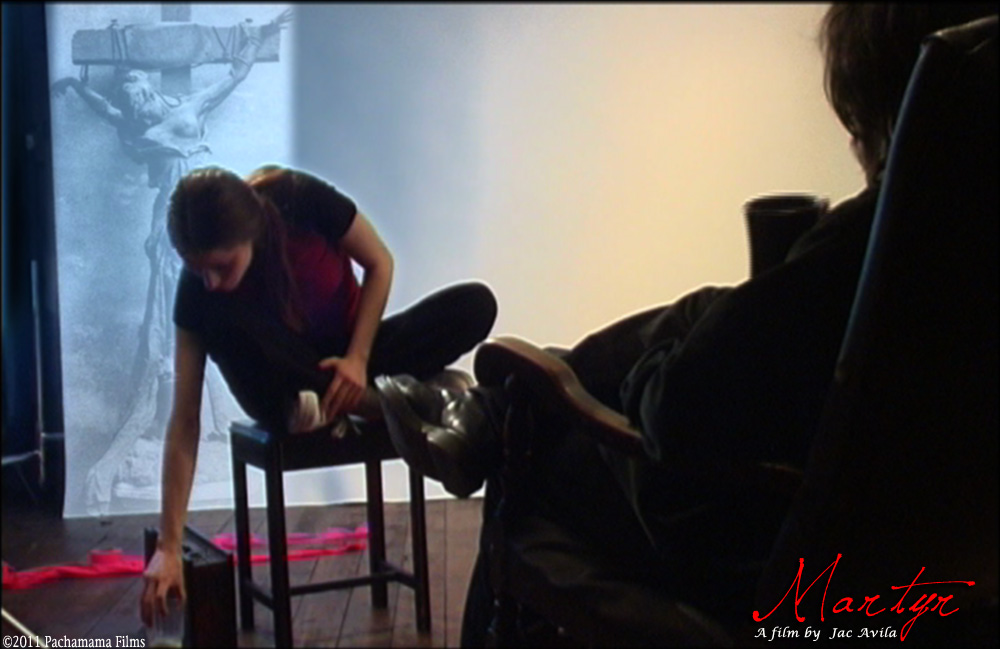
Amy: I’m drawn to what people define as “sadomasochism” because it’s part of who we are as human beings, it’s ever present in culture and society. Essentially, human beings are animals in the sense that we still have instincts. We all have feelings that we might not understand, to dominate, and/or be dominated. Why do some people become leaders and others prefer not to? It’s a universal concept.
What do we do with these instincts in a modern world? We form them into fantasies, we sexualize them, we make niches and put them into those, we define them as something else. There are sadomasochistic elements in many fairy-tales as well, so we’re exposed to the concept of transmuting our instincts very early.
Any future projects the two of you would like to talk about?
|
|
Jac: We have two other releases coming up, Barbazul and Le Marquis de La Croix, both directed by Amy and both with me as the leading man… Playing Barbazul, a lady killer, and Le Marquis, based on De Sade, were truly the most intense experiences I ever had.
Amy: Sirwiñakuy, my directorial debut which ran in the Cinemateca Boliviana for 5 months, will be released to DVD soon, we’re waiting on German subtitles right now. And I’m excited about the release of my second (Barbazul) and third (Le Marquis de la Croix) films as writer/director.
We’re looking for locations for my next film, and we plan to start shooting early next year.
Anything else you are dying to mention and I have merely forgotten to ask?
Jac: The style of the film. When I first started shooting Maleficarum I had an idea of what would happened to the two women, from beginning to end. I didn’t have to write a script for that. It was simply a matter of putting them through their ordeal in an almost sequential way. However, to build the story behind it I used the archives of the Peruvian Inquisition. I decided to inter-cut the torture sequences with the damming testimonies of people.
The testimonies are actual testimonies of that time. I didn’t have to invent any of them, just adapt them to the story. I had a lot to choose from, 300 pages of crazy stories.
A bit like Rashomon, where the same event is told from different points of view. The only problem is that most points of view go against the women.
I can honestly say that I wrote this movie with the camera.
Thanks for the interview!
To download Maleficarum: http://movies.vermeerworks.com
To buy the DVD of Maleficarum: https://dvds.vermeerworks.com
Jac’s Facebook: http://www.facebook.com/jac.avila
Amy’s Facebook: http://facebook.com/amyhesketh
Jac’s blog: http://jacavila.blogspot.com
Amy’s blog: http://amyhesketh.blogspot.com
Jac Avila on (re)Search my Trash
Amy Hesketh on (re)Search my Trash
© by Mike Haberfelner
Legal note: (re)Search my Trash cannot
and shall not be held responsible for
content of sites from a third party.
